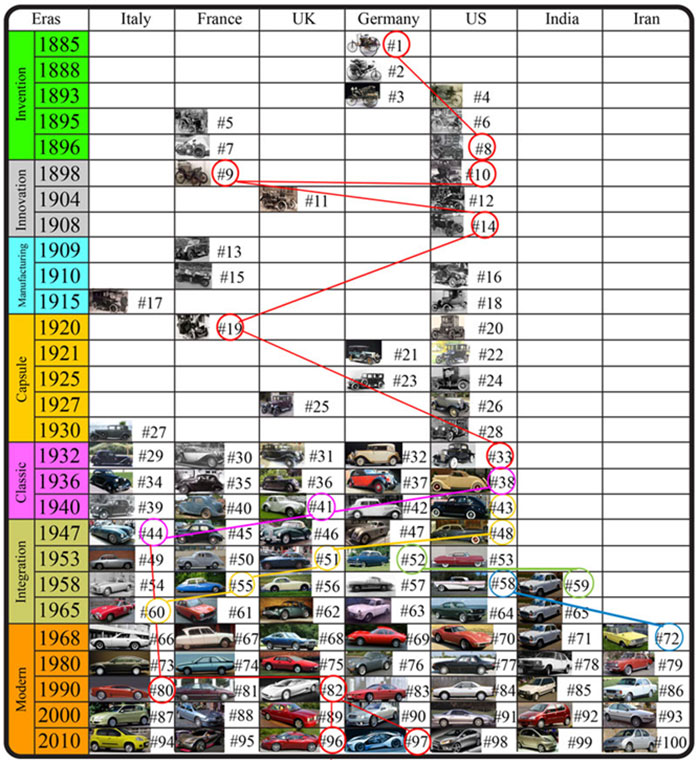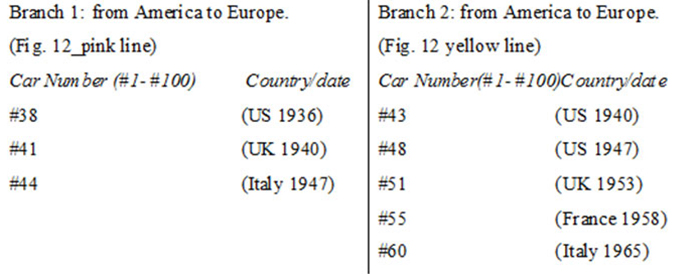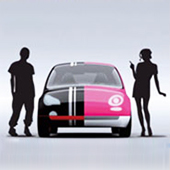Automobile designers have been applying the expression of speed to their cars ever since they affixed the first engine to a horseless carriage. And as an answer to the question “What factors are responsible for establishing the emotional relationship between a vehicle and its users?”

Fig.12 - The Evolution of the Automobile
It is seen in Figure 11 and in design of ‘hatch back* that the automobile has evolved over time reflecting the culture and lifestyle of their respective eras. The Invention era was concerned with building an engine that could propel a frame. In the Integration era it was very important for a car to express speed. The manufacturing era saw the industrialist become proficient at mass production. In the Capsule era designers began to pay more attention to creating a body and interior space. The integration era paved the way to the uni-body designs that we see on today’s vehicles. Current modern design theory looks at the bigger picture to design cars for individuals. Speed is not the only feeling designers are trying to convey through their automobiles. As for other expressions, one should have one more study to elaborate on the car face. We have entered a time of more awareness towards environmental factors and now cars tend to reflect a gentler lifestyle and aesthetic. Auto designers today use all parts of the car to express a personalized emotional expression for individual lifestyles.
In the evolution of the car form one can summarize to see two branches of influences in the ability of European and American designers as presented in (Table 1):
• Branch 1: European designers were innovative and pioneered before 1936 and after 1965.
• Branch 2: Which demonstrated U.S. designers ingenuity and innovation (between 1936 and 1965).
Table 1: Branches of car evolution


